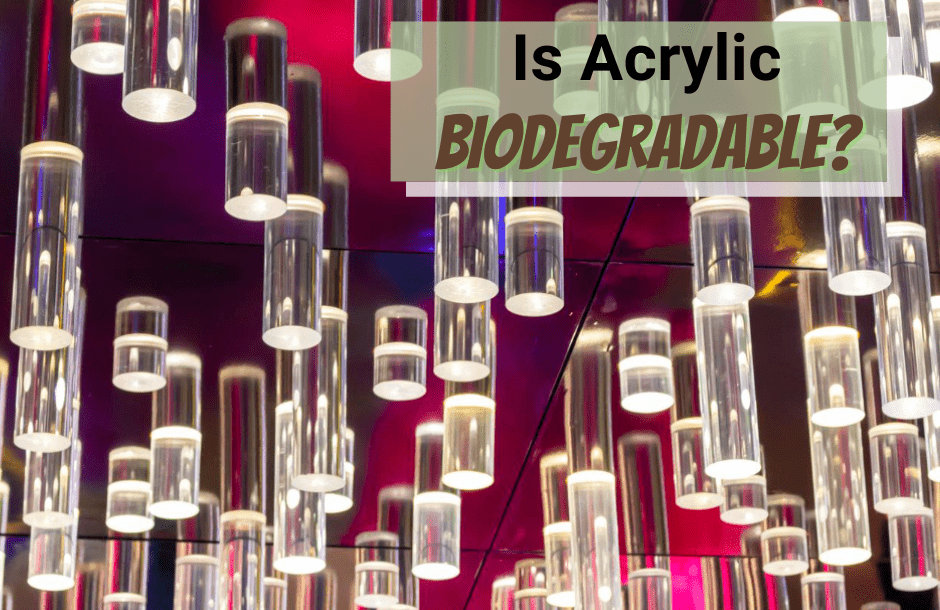Is acrylic biodegradable?
There is a lot of debate surrounding the biodegradability of acrylic. Some people claim that it is biodegradable, while others insist that it is not. So, what is the truth?
Acrylic is a type of plastic that is made from acrylonitrile and methacrylate. It is a very popular material for a variety of applications, including, but not limited to, signage, furniture, and vehicle body parts. It is also often used as a substitute for glass, as it is shatterproof.
One of the main reasons that people believe that acrylic is biodegradable is that it is made from natural materials. Acrylonitrile is derived from natural gas, and methacrylate is made from acrylic acid, which is a naturally occurring acid. However, the fact that something is made from natural materials does not mean that it is biodegradable.
The main reason that acrylic is not biodegradable is because it is a polymer. Polymers are large molecules that are made up of many smaller molecules. Polymers are not broken down by microorganisms, which is what is needed for something to be biodegradable.
There are a few ways that acrylic can be broken down. One way is through thermal degradation, which is when the material is heated up to a very high temperature. This process can produce harmful fumes, and it is not a very efficient way to break down the material.
Another way to break down acrylic is through chemical degradation. This process uses a variety of chemicals to break down the polymer into smaller molecules. However, this process is also not very efficient, and it can be difficult to control the reaction.
The most efficient way to break down acrylic is through photodegradation. This process uses light to break down the polymer into smaller molecules. However, this process requires a lot of light, and it can take a long time for the material to break down.
So, is acrylic biodegradable? The answer is no. Although it is made from natural materials, acrylic is not biodegradable because it is a polymer. However, there are a few ways to break down the material, and the most efficient way is through photodegradation.
Is acrylic plastic harmful to the environment?
There is some debate over whether acrylic plastic is harmful to the environment. Some people argue that the production of acrylic plastic releases harmful toxins into the air, which can damage the environment. However, others argue that the environmental impact of acrylic plastic is minimal and that its benefits outweigh any potential risks.
Is acrylic plastic recyclable?
Yes, acrylic plastic is recyclable. However, it is not always easy to recycle, as it can be difficult to separate from other types of plastic.
What are the environmental benefits of using acrylic plastic?
Acrylic plastic is a lightweight, durable material that is easy to process. It is also non-toxic and non-flammable, making it a safe choice for use in a variety of applications. Additionally, acrylic plastic can be recycled, which makes it a more environmentally friendly option than some other types of plastic.
What are the environmental costs of using acrylic plastic?
The production of acrylic plastic can release harmful toxins into the air, which can damage the environment. Additionally, acrylic plastic is not always easy to recycle, which can lead to waste.
What are the potential risks associated with using acrylic plastic?
There is some debate over whether acrylic plastic is harmful to the environment. Some people argue that the production of acrylic plastic releases harmful toxins into the air, which can damage the environment. However, others argue that the environmental impact of acrylic plastic is minimal and that its benefits outweigh any potential risks.
How long does plastic acrylic take to decompose?
This is a difficult question to answer as it depends on a number of factors, including the type of plastic, the climate, and the level of pollution in the environment. However, most plastics take hundreds of years to decompose, and some can take even longer.
One of the most common types of plastic is acrylic, which is made from a polymer called polymethyl methacrylate. Although it is not biodegradable, acrylic does break down over time. The rate at which it decomposes, however, depends on a number of factors, including the thickness and color of the plastic.
Acrylic that is exposed to the sun and other elements will decompose more quickly than acrylic that is not. In general, however, it will take many years for the acrylic to decompose completely.

